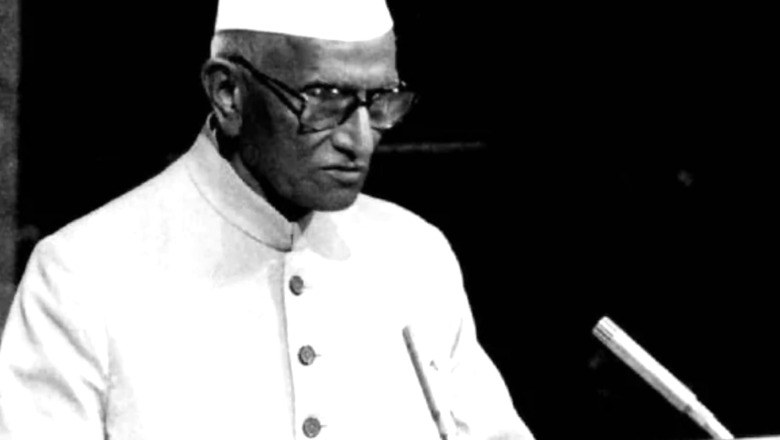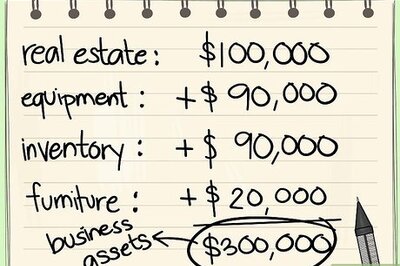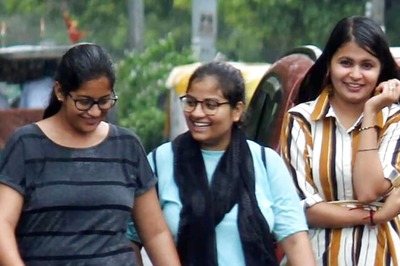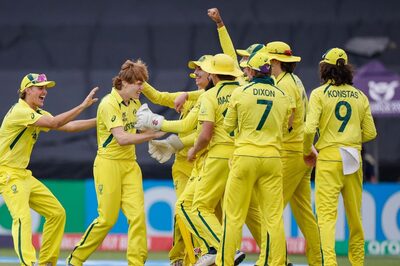
views
Come February 1 and Finance Minister Nirmala Sitharaman will present the Union Budget 2022 as India reels under a fresh wave of coronavirus driven by the Omicron variant.
On Friday, the ministry of parliamentary affairs said in a statement: “The Union Budget for 2022-23 will be laid in the Rajya Sabha after its presentation in Lok Sabha on Tuesday, the 1st of February at 11.00 am.” The first part of the Budget session will start on January 31 and will continue till February 11. The second part of Budget session would begin from March 14 and conclude on April 8.
As the country waits with the hope of relief to the common man in the budget, News18 brings to you a look back at the history of the document and how it came into being.
Pre-independent India saw its first budget on February 18, 1869, presented by James Wilson, the ‘Finance Member of the India Council’. He advised the Indian Viceroy and was described as an “economical mandarin of high standing” by Karl Marx.
The British Crown, still reeling from the effects of the 1857 mutiny, appointed a Scottish businessman to find a solution to India’s financial crisis. Wilson had a credible presence in England due to his firm grasp on economic theory and policy, as well as a practical knowledge of commercial affairs, according to a report in the Indian Express.
He is credited with introducing a financial budget based on the English model in India. Although Wilson’s budget was criticised for failing to take into account Indian conditions, it did lay the groundwork for how several economic institutions in India would operate in the future, particularly the income tax, the report states.
The enormous increase in annual military expenses demonstrates the British empire’s crisis following the Mutiny. Wilson resolved to introduce major institutional changes as the Indian Finance Member, and hoped to ensure the influence of economic principles in India’s financial management.
Wilson’s major proposals included taxing the trading classes, issuing a government paper currency, reforming the financial system with budgets, estimates, and auditing, establishing a civil police force, and a department for public works and roads. He is also credited with establishing a military finance commission as well as a civil finance commission.
In his budget, he imposed three types of taxes: income tax, licence tax, and tobacco tax. However, only the first one was approved, as the other two were withdrawn at the request of India’s governor-general, Charles Canning.
Independent India’s First Budget
Independent India saw its first budget on November 26, 1947, when the first Finance Minister of Independent India, RK Shanmukham Chetty, presented it.
Chetty was a politician, industrialist, and lawyer. Before becoming India’s Finance Minister, he was President of the Central Legislative Assembly from 1933 to 1935. From 1935 to 1941, he served as Diwan of the Cochin kingdom
The Union Budget presented in November 1947 did not include any tax proposals, and total revenues were estimated to be Rs 171.15 crore. The fiscal deficit was expected to be Rs 24.59 crore. On the last working day of February, Chetty presented the budget in a briefcase at 5.00 PM.
“Our economy is more balanced than that of most countries and, in spite of the setbacks resulting from partition, our large natural resources and sound financial position will enable us to launch a vigorous economic plan for substantially raising the living standard of our people,” Chetty had said in his speech before presenting the budget.
According to data on the Department of Economic Affairs’ website, the 1947 budget statement covered a period of seven-and-a-half months, from August 15, 1947, to March 31, 1948. It had a target revenue of Rs 171.15 crore.
John Mathai’s Lucid Budget Speech
Chetty was succeeded by John Mathai, who delivered the most lucid Budget Speech in 1949-50, opting not to read out all the details and instead informing members that a White Paper with all the details was being circulated. He then gave a brief presentation on inflation and economic policy. It was the first Budget for a truly united India, as it included financial statements for former princely states, and the main news was the formation of the Planning Commission and the need for five-year plans, a report by the Economic Times states.
CD Deshmukh’s Humane Perspective
Mathai was succeeded by CD Deshmukh, who was also the Reserve Bank of India’s first Indian Governor. He presented an interim budget for the fiscal year 1951-52. The first post-independence general elections were held between December and February 1952. After the new ministry took office, Deshmukh was given the Finance portfolio.
Beginning in 1955-56, Hindi was incorporated into budget documents. Deshmukh’s management of the country’s finances was characterised by prudence and a humane perspective. He provided the much-needed vision for dealing with India’s changing financial needs as a young, independent, and underdeveloped country.
He made significant contributions to the development and implementation of the country’s First and Second Five-Year Plans, which laid a solid foundation for the years ahead. He was in charge of ensuring social control of the financial structure, such as by enacting a new Companies Act and nationalising the Imperial Bank of India and life insurance companies. He resigned from the Union Cabinet in protest of Mumbai’s separation from Maharashtra, a report states.
No ‘Spouse Allowance’
Morarji Desai is the only Finance Minister who has presented the most budgets so far — eight annual and two interim. Desai’s 1968 budget abolished excise department stamping and assessment of goods at the factory gate. In order to boost manufacturing, he implemented a self-assessment system for manufacturers. The reform reduced the excise department’s administrative burden.
In his 1968 budget, he eliminated the “spouse allowance” for married couples who both paid income taxes. In his budget speech, he stated, “it would be improper for any outsider to decide who is dependent on whom… to eliminate this unintended strain on the marriage relationship.” Desai resigned in 1969 to protest the ordinance’s nationalisation of major banks. He believed that social control of banks would regulate their operations and hold them accountable.
‘I Now Commend the Budget for the Acceptance of This House’
The Union Budgets 1975-76 and 1976-77 were presented by C Subramaniam. He cast the widest net possible in order to increase revenue through excise.
C Subramaniam is also the first recorded FM to conclude his speech with the words, “I now commend the Budget for the acceptance of this House.” The usual way to end the Budget has been something along these lines. He was also the first Chidambaram to hold the position – hence the ‘C’ in his name.
The 1991 reforms
Manmohan Singh served as governor of the Reserve Bank of India in the late 1980s and was appointed finance minister by Prime Minister Narasimha Rao in 1991. In July 1991, he presented the final budget for 1991-1992. The interim and final budgets were presented for the first time by two ministers from opposing political parties. Manmohan Singh’s next four annual budgets had a different orientation than those preceding them.
Singh and Rao’s economic liberalisation package opened up the country to foreign direct investment and reduced red tape that had previously stifled business growth. The liberalisation was prompted by a severe balance-of-payments crisis in which the Indian government was unable to meet its obligations and had begun preparations to mortgage its gold reserves to the Bank of England in order to obtain the cash reserves required to run the country.
Manmohan Singh’s 1991 Budget speech made no attempt to conceal the severity of the economic crisis that existed at the time.
“The new Government, which assumed office barely a month ago, inherited an economy in deep crisis. The balance of payments situation is precarious…We have been at the edge of precipice since December 1990 and more so since April 1991…The people of India have to face double digit inflation which hurts most the poorer sections of our society. In sum, the crisis in our economy is both acute and deep. We have not experienced anything similar in the history of independent India.”
Even before 1991, the Indian economy experienced fiscal, inflationary, and balance-of-payments crises. Where the 1991 Budget differed was in its determination to enact comprehensive policy reform.
Read all the Latest Business News here



















Comments
0 comment